Available only to F1 Access subscribers, Formula1.com's live Race Performance Ratings provide unprecedented real-time insight into the action as it unfolds on track during the Grand Prix. For the very first time, the inputs a driver makes can be tracked and viewed by fans, who can compare competitors head-to-head, and at any stage of the race. In the fourth of five features explaining how the Ratings are calculated, we take a look at Steering - and ask what it can tell us about the differing approaches to the recent Spanish and Monaco Grands Prix...
What are Race Performance Ratings?
Five key parameters are measured: Aggression, Braking, Cornering, Steering and Throttle. Each category is determined by the raw telemetry from each driver, but given the sensitive nature of that data the Ratings are expressed as an indexed score, with each driver ranked on a scale of 1-10 based on how they compare to their competitors.
The individual scores for each of the five categories - which update every five seconds throughout the race - are averaged to give an overall Race Performance Rating, which can be tracked live during each race in 2015.
Steering
The steering score is a simple reflection of the number of inputs a driver makes on their steering wheel. From full lock left to full lock right, each input is measured on a sliding scale, with the differences then averaged out to provide a base total, which is then indexed against the averages for the entire field. A high Steering score therefore indicates a driver ‘sawing’ or making numerous adjustments, while a low score reflects a far smoother series of inputs on the wheel.
Rosberg versus Vettel
In the first four races of the 2015 campaign, Nico Rosberg and Sebastian Vettel’s scores in Steering were consistently and evenly matched. Over the last two races, however, that pattern has changed significantly.
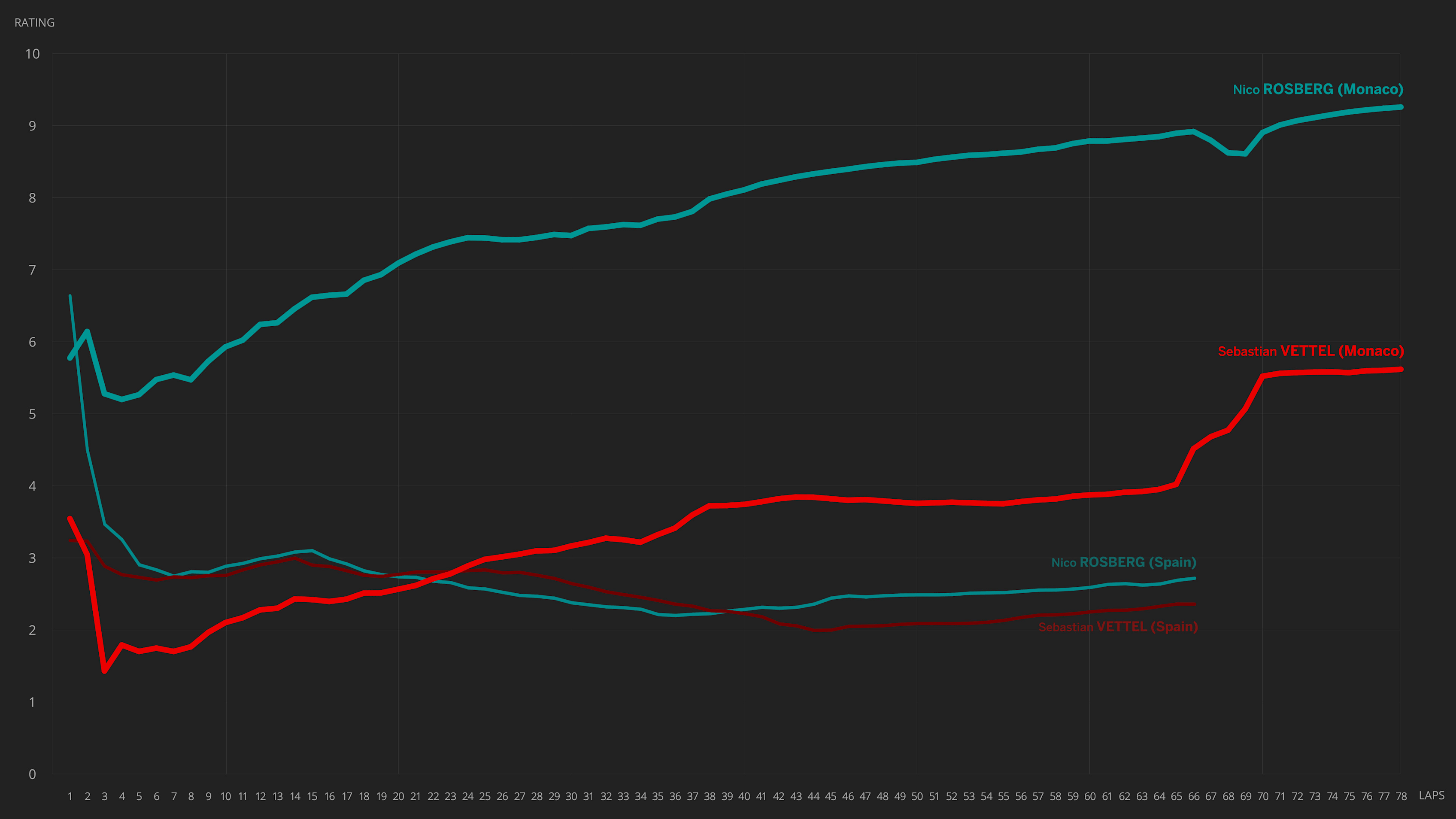
As the graph above shows, Vettel’s scores in Monte Carlo and Barcelona are on a similar scale. His Monaco trace does end up being a bit higher, but this is not unexpected - as a street circuit with more intricate corners, and with barriers awaiting any misstep, drivers will naturally work their steering harder than at circuits like Barcelona.
But what is interesting to note is that where Vettel’s trace doesn’t change dramatically between the two tracks, Rosberg’s does - in fact he posts his highest steering score of 2015 in Monte Carlo, and his lowest in Barcelona.
Of course, circumstances dictate some of the difference. In Spain Rosberg had the race under control from lap one, meaning he was able to manage his pace - and his inputs - from the outset. In Monaco, however, he had Vettel swarming over the back of his Mercedes, while he was simultaneously trying to catch and pressure team mate Lewis Hamilton.
Even so, the difference between Rosberg’s two scores seems to reflect a wider change in approach by Mercedes themselves. Where Ferrari were able to generate their pace without either driver having to work their steering significantly harder than in Spain, both Mercedes drivers show a radically different approach, with Rosberg’s jump being matched by Hamilton (for whom data is sadly not available after lap 13). In fact, Rosberg finishes second only to Marussia’s Roberto Merhi, who has been top of the steering charts all season as he struggles with the handling and downforce of the MR04. Rosberg and Vettel posted similar lap times throughout the Grand Prix, of course, but it is interesting to note how very different their approaches were during the race.
As a final note, it is worth noting how Vettel’s score spikes significantly at the end in Monaco (Rosberg’s also increases, but to a lesser degree). The score starts spiking on lap 64, when the drivers are fighting to keep temperature in their tyres behind the safety car. At this point, however, Vettel also overtakes Hamilton due to the latter’s pit stop. With the Mercedes now behind, Vettel cannot relax over the final laps, with the extra inputs he is having to make are reflected in his final steering score.
Button closes the gap
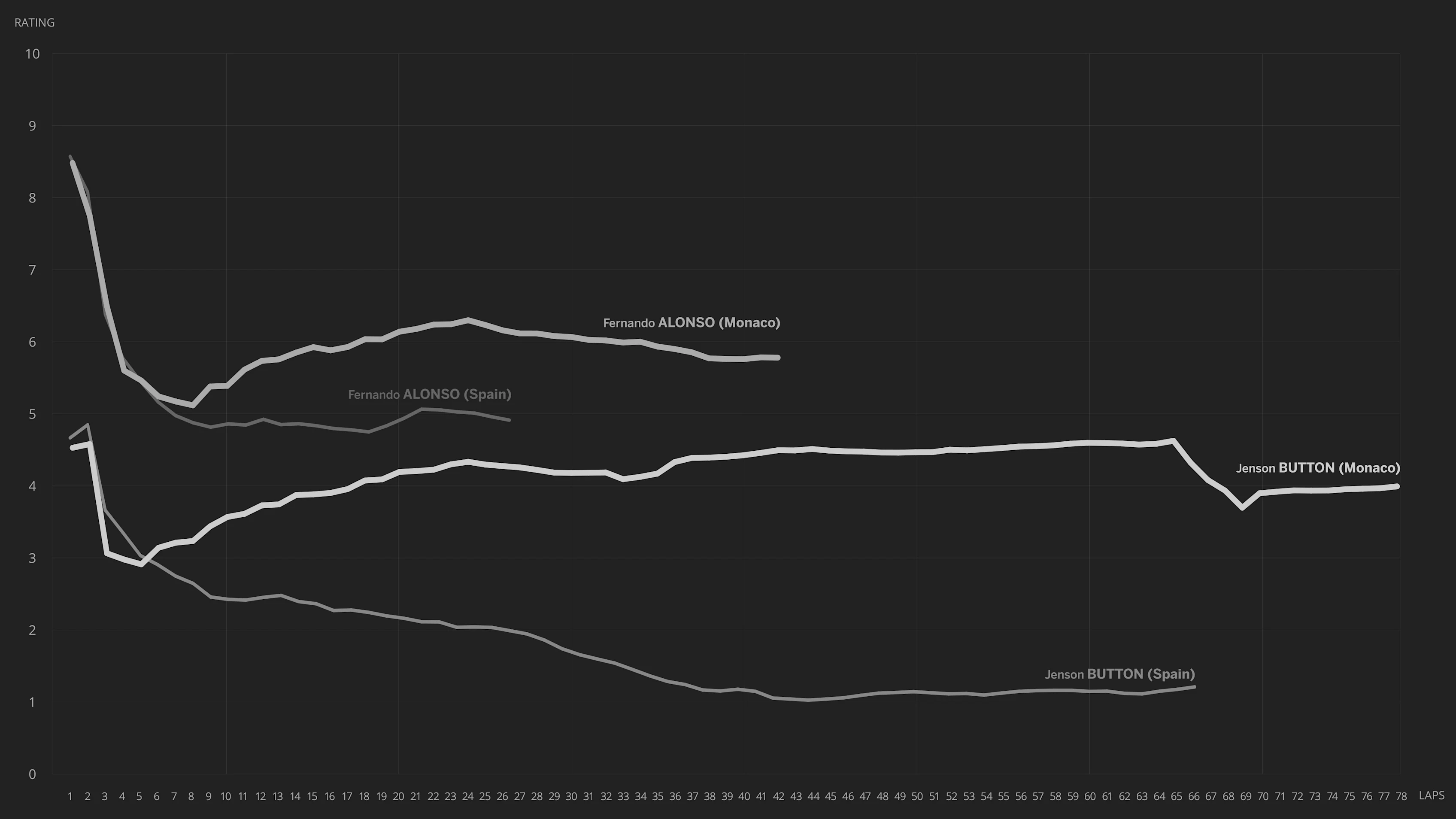
So far this season, there has been a bigger disparity between Fernando Alonso and Jenson Button's steering scores than any other team mates bar the Marussia duo.
Much of the difference is down to innate driving style. Alonso is renowned for his hustling, aggressive approach, while Button is famed for his ultra-smooth inputs. It was not surprising, therefore, to see Alonso post a far higher steering score than his team mate in Malaysia, China, Bahrain and Spain (Alonso was of course not present in Australia).
Monaco however heralded a slightly different approach from Button, who registered his highest score of the season so far - which also made for the smallest relative difference between the two McLaren drivers so far in 2015.
Of course, steering alone does not determine outright performance, and Button's higher score should not be read as a surge up the competitive order. But it does indicate a change of approach or style to suit the streets of Monte Carlo, and one that paid dividends as the Briton scored McLaren's first points of the season in seventh.
The opposite ends of the scale
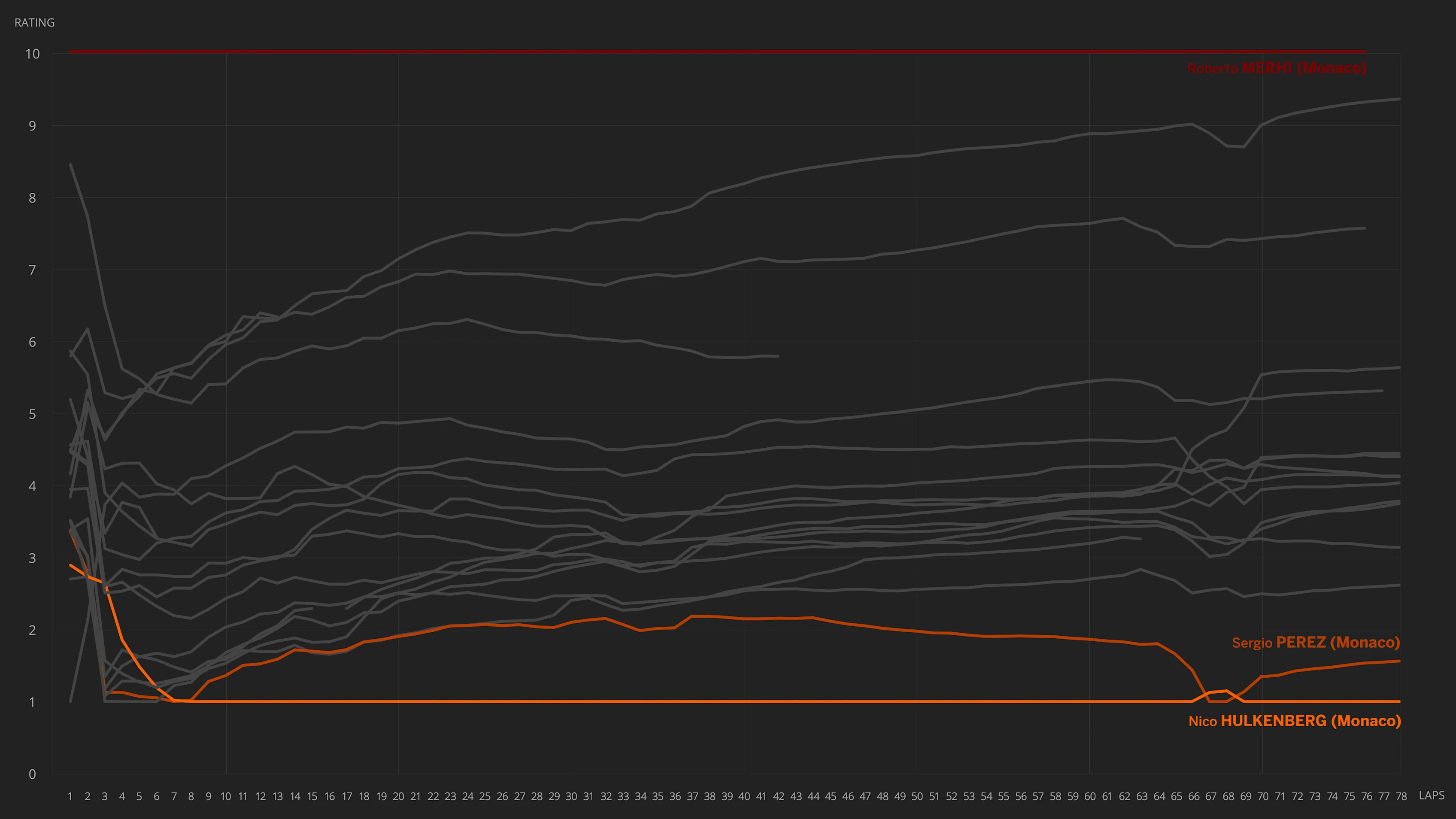
As mentioned earlier, Roberto Merhi has been at the top of the steering ratings in every Grand Prix this year. Conversely, Force India are often the lowest scorers.
Monaco was no exception. Nico Hulkenberg posted the lowest trace almost throughout the race, with Sergio Perez dipping lower only during the safety car. The duo were comfortably lower than anyone else - in fact Hulkenberg was one of only three drivers whose steering score fell between Spain and Monaco (along with Williams' Valtteri Bottas and Ferrari's Kimi Raikkonen).
Significantly, while no other team scored lower than Force India for steering, the team made it work for them: Hulkenberg was slightly unfortunate not to score points, finishing 11th despite being tipped into a spin on the opening lap, while Perez was a superb seventh.
Enhance the way you experience Formula 1 racing, and discover a level of detail you won't find anywhere else - complete with in-depth insights, exclusive content, up-to-the-minute race data, and more - with F1® Access. To find out more, click here.
Next Up
Related Articles
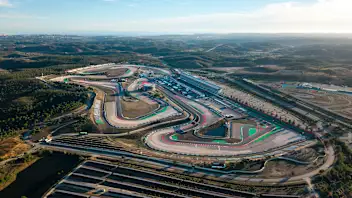 Formula 1 to return to Portugal in 2027 and 2028
Formula 1 to return to Portugal in 2027 and 2028 F1 AcademyHaas name Countryman as 2026 F1 ACADEMY driver
F1 AcademyHaas name Countryman as 2026 F1 ACADEMY driver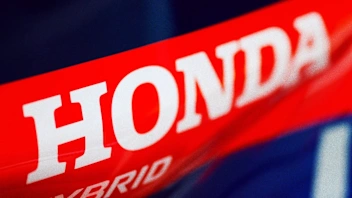 Honda reveal details around power unit launch
Honda reveal details around power unit launch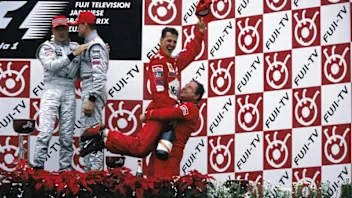 The most iconic recent championship celebrations
The most iconic recent championship celebrations EXPLAINED: The key terms for F1’s new-for-2026 rules
EXPLAINED: The key terms for F1’s new-for-2026 rules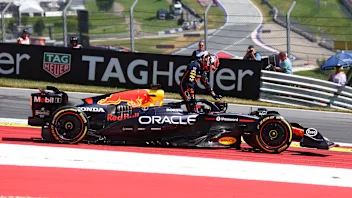 ‘I hated this car at times’ – Verstappen on his 2025 season
‘I hated this car at times’ – Verstappen on his 2025 season